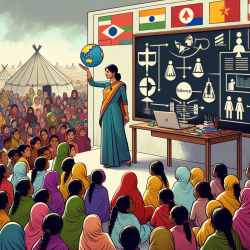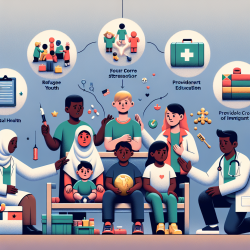The plight of the Rohingya people, particularly their children, has been a subject of global concern. Displaced from Myanmar to Bangladesh, they face numerous challenges, one of which is the culturally ingrained practice of child marriage. A recent study titled "Child marriage practices among the Rohingya in Bangladesh" sheds light on this issue and offers insights that practitioners can use to improve their skills and advocate for change.
Understanding the Context
The Rohingya are a Muslim ethnic minority group that has faced severe oppression and violence in Myanmar, leading to their mass displacement to Bangladesh. In Cox's Bazar, where nearly a million Rohingya now reside, child marriage is prevalent. This practice is deeply rooted in socio-cultural and religious beliefs about readiness for marriage.
The study highlights that while child marriage was also practiced in Myanmar, state laws and military oppression prevented many marriages before age 18. However, in the camps in Bangladesh, these restrictions are less stringent, allowing for more frequent occurrences of child marriages.
The Role of Practitioners
Practitioners working with displaced populations like the Rohingya have a unique opportunity to make a difference. By understanding the cultural and legal nuances of child marriage within these communities, practitioners can develop more effective intervention strategies. Here are some ways practitioners can enhance their impact:
- Cultural Sensitivity: Understanding the cultural and religious beliefs that drive child marriage among the Rohingya is crucial. Practitioners should engage with community leaders and members to foster trust and openness.
- Advocacy for Legal Compliance: While there are fewer restrictions on marriage age in the camps, advocating for stronger enforcement of existing laws can help reduce child marriages. Practitioners can work with local authorities to promote legal compliance.
- Education and Empowerment: Providing education and empowerment programs for girls can offer alternatives to early marriage. These programs should focus on skill-building and creating economic opportunities.
- Networking and Collaboration: Collaborating with NGOs, community leaders, and international organizations can amplify efforts to address child marriage. Sharing resources and strategies through networks can lead to more comprehensive solutions.
The Need for Further Research
The study underscores the importance of continued research into child marriage practices among displaced populations. Understanding how these practices evolve in response to changing legal environments and socio-economic conditions is vital for developing effective interventions.
Child marriage practices among the Rohingya in Bangladesh
This research provides a foundation for practitioners to build upon as they seek to improve outcomes for vulnerable populations like the Rohingya. By staying informed and proactive, practitioners can play a pivotal role in transforming lives.










